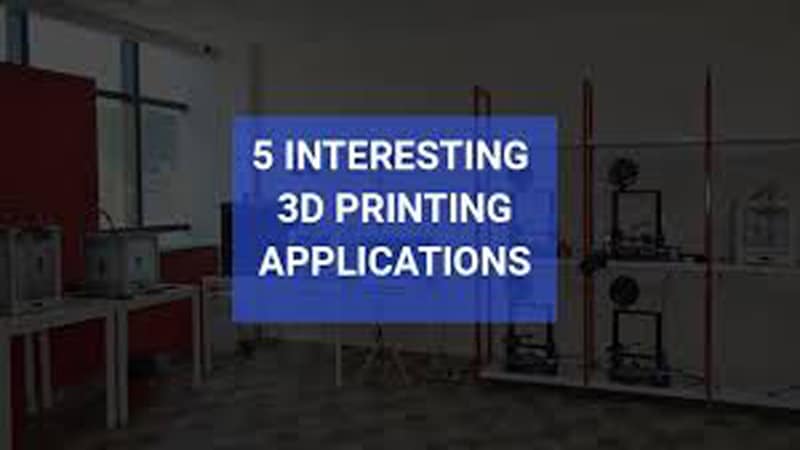3D printing applications cover various sectors from education and industry, and the whole value chain from prototypes to spare part management. While 3D printing has been around for decades, it has surged in popularity and usage in recent years. 3D printing typically refers to the process of converting the design data into three dimensional solid objects by layering additive materials on top of one other. Although the technical capabilities of 3D printing have become more affordable and widespread in recent years.
New 3D printing applications are constantly being developed but the applications detailed below have risen up in popularity. Here are the 5 interesting applications of 3D printing:
1.EDUCATION
The benefits of 3D printing for educational purposes are that it helps better to prepare students for their future by allowing students to create prototypes without the need for expensive tooling. Students learn about the 3D printing applications by designing and producing models they can actually hold.
Students learn about a variety of 3D printing applications by exploring designs, engineering, and architectural principles. They are able to duplicate museum items like fossils and historical artifacts to study in the classroom without the possibility of damaging delicate collections.
2.PROTOTYPING & MANUFACTURING
Additive manufacturing’s earliest applications have been on the toolroom end of the manufacturing spectrum. For, example, rapid prototyping was one of the earliest additive variants, and its mission was to reduce the lead time and cost of developing prototypes of new parts and devices, which was earlier done with subtractive toolroom methods such as CNC milling and turning, and precision grinding, far more accurate than 3D printing and creating better quality parts faster, but sometimes too expensive for low accuracy prototype parts.
3.HEALTHCARE
In the last several years there have been many 3D printing applications in the world of medicine. They range from bioprinting- where the biomaterials such as cells and growth factors are combined to create tissue-like structures imitating their natural counterparts- to medical devices like prosthetics. 3D printing applications in medicine are also used for producing metal orthopedic, cranial, and dental implants. Due to 3D printing’s capabilities for creating porous surfaces, these types of implants more easily integrate with the patient’s own natural bones, allowing them to grow into the implant.
4.CONSTRUCTION & ARCHITECTURE
3D printing is used to produce architectural scale models, enabling a faster turnaround of the scale model and increasing the overall speed and complexity of the objects produced. Looking to the future, Additive Manufacturing is a technology that enables the automated manufacturing of the most complex architectural components without extra labor costs. Based on a digital model, the 3D printing of buildings or components is technically achieved by laying down layer upon layer of material until the entire object is formed. In recent years, the field of Additive manufacturing is affected by a high level of progressive research.
5.ART & JEWELRY
Art and Jewellery are two fields where the technology has proven its mettle for manufacturing highly complex and topologically challenging Designs. While Art has numerous opportunities to explore in terms of materials, designs, and technologies, Jewelry has its best-ever opportunity to create better designs. Although technology is not prominent enough in both fields, there is a bigger picture of influence in the coming future. The possibility of manufacturing lightweight jewelry.
